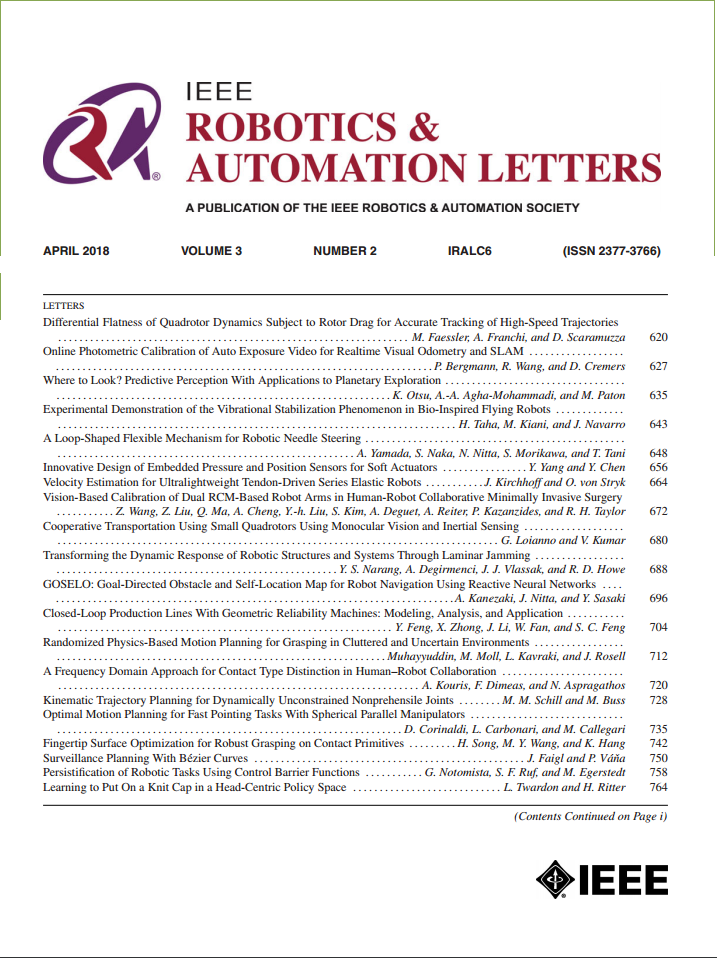Tightly Coupled SLAM With Imprecise Architectural Plans
IF 5.3
2区 计算机科学
Q2 ROBOTICS
引用次数: 0
Abstract
Robots navigating indoor environments often have access to architectural plans, which can serve as prior knowledge to enhance their localization and mapping capabilities. While some SLAM algorithms leverage these plans for global localization in real-world environments, they typically overlook a critical challenge: the “as-planned” architectural designs frequently deviate from the “as-built” real-world environments. To address this gap, we present a novel algorithm that tightly couples LIDAR-based simultaneous localization and mapping with architectural plans in the presence of deviations. Our method utilizes a multi-layered semantic representation to not only localize the robot, but also to estimate global alignment and structural deviations between “as-planned” and “as-built” environments in real-time. To validate our approach, we performed experiments in simulated and real datasets demonstrating robustness to structural deviations up to 35 cm and紧耦合SLAM与不精确的建筑计划
在室内环境中导航的机器人通常可以访问建筑平面图,这可以作为增强其定位和绘图能力的先验知识。虽然一些SLAM算法利用这些计划在现实世界环境中进行全局定位,但它们通常忽略了一个关键的挑战:“计划中的”体系结构设计经常偏离“建成的”现实世界环境。为了解决这一差距,我们提出了一种新的算法,该算法在存在偏差的情况下将基于激光雷达的同步定位和映射与建筑计划紧密耦合。我们的方法利用多层语义表示不仅可以定位机器人,还可以实时估计“计划”和“建成”环境之间的全局对齐和结构偏差。为了验证我们的方法,我们在模拟和真实数据集中进行了实验,证明了结构偏差高达35 cm和$15^\circ$的鲁棒性。在模拟环境中,我们的方法比基线平均减少43%的定位误差,而在真实环境中,“建成”3D地图的平均对齐误差降低7%。
本文章由计算机程序翻译,如有差异,请以英文原文为准。
求助全文
约1分钟内获得全文
求助全文
来源期刊

IEEE Robotics and Automation Letters
Computer Science-Computer Science Applications
CiteScore
9.60
自引率
15.40%
发文量
1428
期刊介绍:
The scope of this journal is to publish peer-reviewed articles that provide a timely and concise account of innovative research ideas and application results, reporting significant theoretical findings and application case studies in areas of robotics and automation.
 求助内容:
求助内容: 应助结果提醒方式:
应助结果提醒方式:


